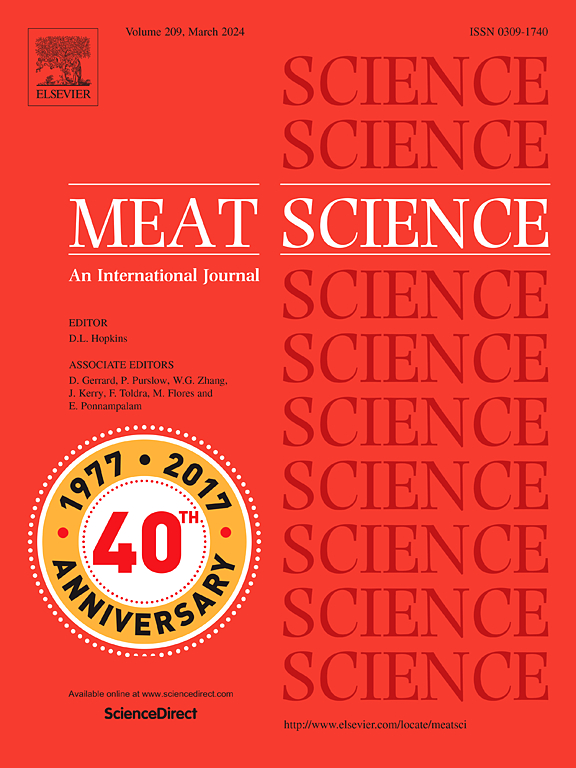基于高光谱数据的深度神经网络估算猪臀半棘肌蒸煮损失。
IF 7.1
1区 农林科学
Q1 Agricultural and Biological Sciences
引用次数: 0
摘要
本研究评估了基于深度学习的模型的性能,该模型使用死后24小时捕获的高光谱图像来预测猪臀半棘肌(SC)肌肉的烹饪损失。为了克服小尺度样本,使用70个猪屁股进行基于像素的数据增强。主成分回归(PCR)和偏最小二乘回归(PLSR)模型用于预测SC肌肉蒸煮损失,经乘法信号校正后R2值较高,而一阶导数结果的均方根误差(RMSE)较低。基于深度学习的模型优于PCR和PLSR模型。蒸煮损失等级分类模型的分类精度随着等级数的增加而降低,具有3个等级的模型的分类精度最高。深度学习模型的分类准确率最高(0.82)。使用深度学习模型可视化SC肌肉的蒸煮损失。猪臀片的蒸煮损失与SC肌的pH值和蒸煮损失呈极显著相关(分别为-0.54和0.69)。因此,利用高光谱图像的深度学习模型可以预测SC肌肉的蒸煮损失等级。这表明,利用从SC肌获得的高光谱图像可以实现对猪臀质量特性的无损预测。本文章由计算机程序翻译,如有差异,请以英文原文为准。
Cooking loss estimation of semispinalis capitis muscle of pork butt using a deep neural network on hyperspectral data
This study evaluated the performance of a deep-learning-based model that predicted cooking loss in the semispinalis capitis (SC) muscle of pork butts using hyperspectral images captured 24 h postmortem. To overcome low-scale samples, 70 pork butts were used with pixel-based data augmentation. Principal component regression (PCR) and partial least squares regression (PLSR) models for predicting cooking loss in SC muscle showed higher R2 values with multiplicative signal correction, while the first derivative resulted in a lower root mean square error (RMSE). The deep learning-based model outperformed the PCR and PLSR models. The classification accuracy of the models for cooking loss grade classification decreased as the number of grades increased, with the models with three grades achieving the highest classification accuracy. The deep learning model exhibited the highest classification accuracy (0.82). Cooking loss in the SC muscle was visualized using a deep learning model. The pH and cooking loss of the SC muscle were significantly correlated with the cooking loss of pork butt slices (−0.54 and 0.69, respectively). Therefore, a deep learning model using hyperspectral images can predict the cooking loss grade of SC muscle. This suggests that nondestructive prediction of the quality properties of pork butts can be achieved using hyperspectral images obtained from the SC muscle.
求助全文
通过发布文献求助,成功后即可免费获取论文全文。
去求助
来源期刊

Meat Science
工程技术-食品科技
CiteScore
12.60
自引率
9.90%
发文量
282
审稿时长
60 days
期刊介绍:
The aim of Meat Science is to serve as a suitable platform for the dissemination of interdisciplinary and international knowledge on all factors influencing the properties of meat. While the journal primarily focuses on the flesh of mammals, contributions related to poultry will be considered if they enhance the overall understanding of the relationship between muscle nature and meat quality post mortem. Additionally, papers on large birds (e.g., emus, ostriches) as well as wild-captured mammals and crocodiles will be welcomed.
 求助内容:
求助内容: 应助结果提醒方式:
应助结果提醒方式:


